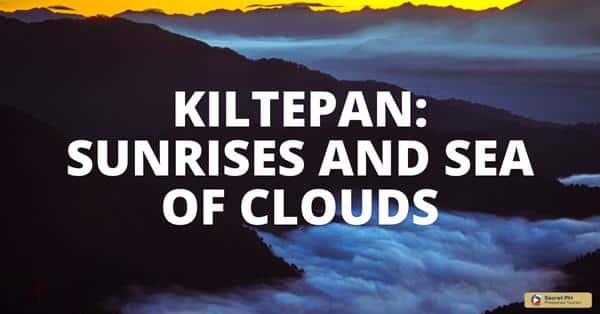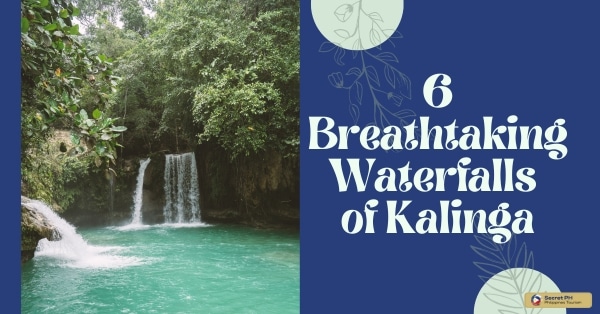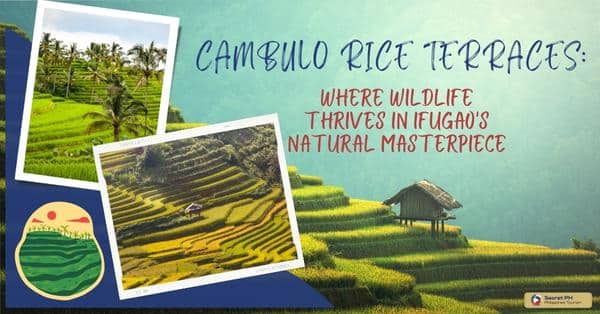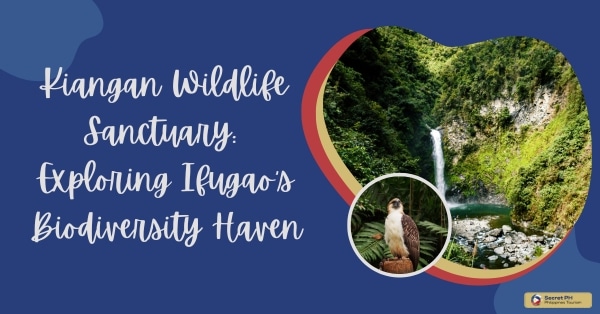The Philippines is home to a variety of marine species, many of which are considered endangered or threatened. One such animal is the dugong, also known as the “sea cow”.
Dugongs are marine mammals that play an important role in the Philippine marine ecosystem. With their unique physical characteristics and gentle nature, they become a symbol of the country’s rich biodiversity.
Their population is under threat due to habitat loss, hunting, and climate change. Conservation efforts are underway to protect and preserve their critical role in maintaining healthy marine ecosystems.
This article will explore the physical characteristics, habitat and distribution, importance to ecosystems, threats, conservation efforts, cultural significance, and opportunities for eco-tourism associated with dugongs in the Philippines.
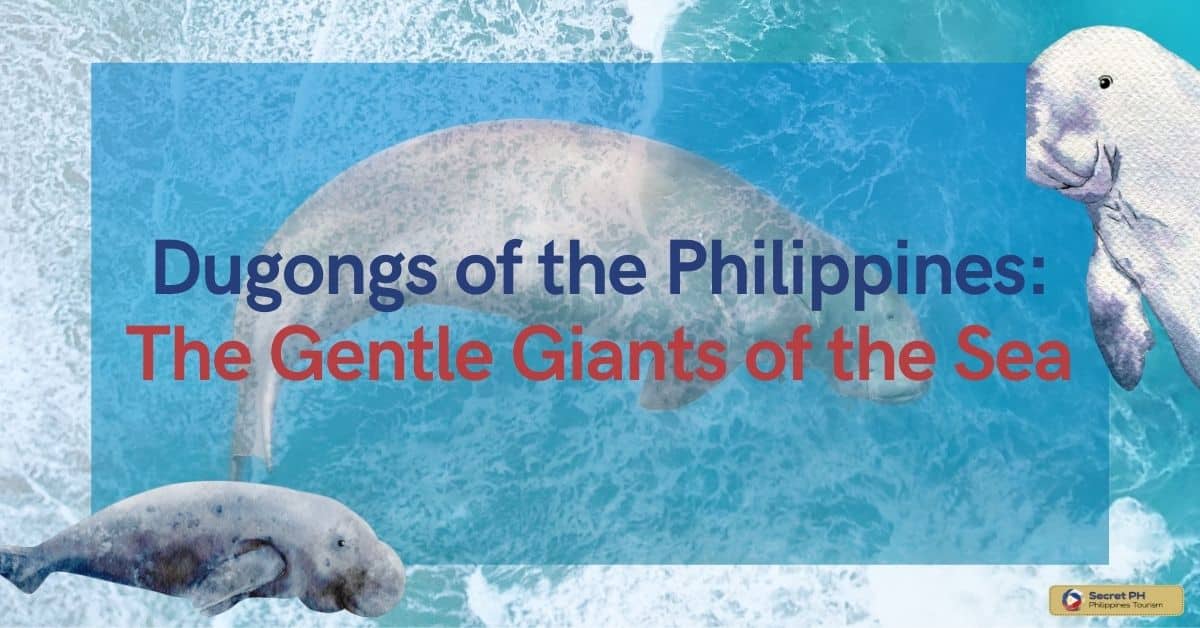
What is Dugong
Dugong, also known as a sea cow, is a large marine mammal that can grow up to 3 meters in length and weigh over 900 kilograms. They are found in the warm coastal waters of the Indian and Pacific Oceans.
In the Philippines, dugongs are commonly found in the waters around Palawan, particularly in the Dugong Protection Zone in Busuanga. These gentle creatures are considered to be a symbol of marine biodiversity and are protected by law in the country.
Dugongs primarily feed on seagrasses and can eat up to 40 kilograms of seagrass in a day. They are known for their sensitive and docile nature, and can often be seen swimming slowly and gracefully along the ocean floor.
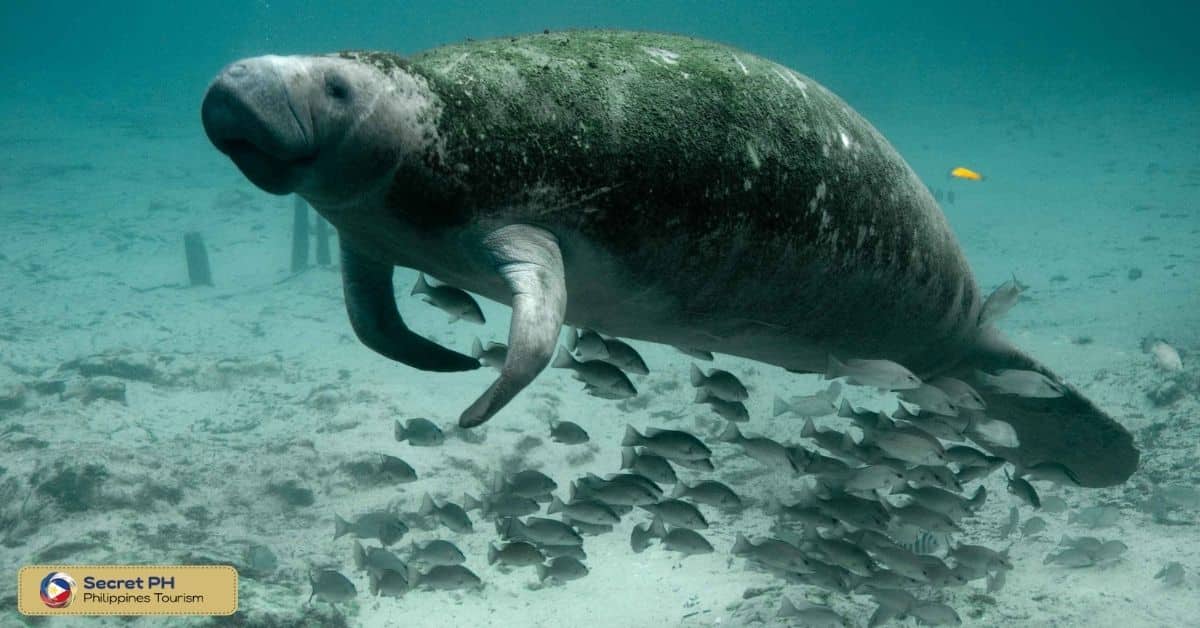
Physical Characteristics of Dugongs
These gentle giants have distinctive physical characteristics that set them apart from other marine mammals. Here are some of the key physical characteristics of dugongs:
- Body shape– Dugongs have a streamlined body shape that is similar to that of a walrus or a manatee. They have rounded heads, tapered bodies, and paddle-like tails that they use to propel themselves through the water.
- Size– Dugongs are one of the largest herbivorous marine mammals, with adult males measuring up to 3 meters (9.8 feet) in length and weighing up to 500 kg (1,102 pounds). Females are slightly smaller, measuring up to 2.5 meters (8.2 feet) in length and weighing up to 300 kg (661 pounds).
- Skin– Dugongs have thick, smooth, and rubbery skin that is almost hairless. Their skin color can range from dark gray to light brown, and it is often covered in markings and scars.
- Mouth and teeth– Dugongs have a broad, spoon-shaped mouth that they use to graze on seagrass. They have no front teeth, but instead have grinding teeth at the back of their mouth that they use to grind up their food.
- Eyes– Dugongs have large, dark eyes that are set far back on their head. This allows them to see almost 360 degrees around their body, making it easier to spot predators.
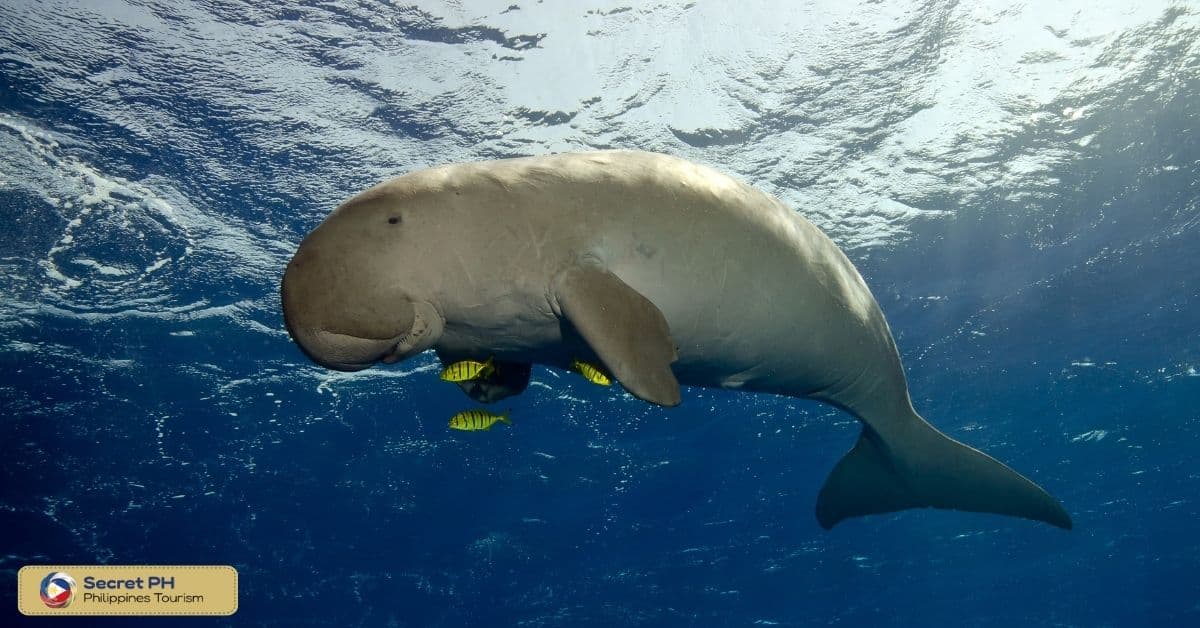
Habitat and Distribution
Dugongs can be found in various areas throughout the Philippines, including the Palawan region, the Tubbataha Reef, and the Cagayancillo Islands. They tend to prefer areas with calm waters, as they are not strong swimmers and are better suited to a slow and steady pace.
Unfortunately, the dugong population in the Philippines is currently under threat due to habitat destruction and hunting. Seagrass beds, which are the primary food source for dugongs, are being destroyed due to pollution, coastal development, and climate change. Additionally, dugongs are hunted for their meat and ivory tusks, further threatening their existence.
Efforts are being made to protect the habitat and population of dugongs in the Philippines. Marine protected areas have been established in areas where dugongs are known to reside.
While awareness campaigns have been launched to educate local communities about the importance of conserving these creatures. With continued effort, it is hoped that the dugong population in the Philippines will remain healthy and thriving for generations to come.
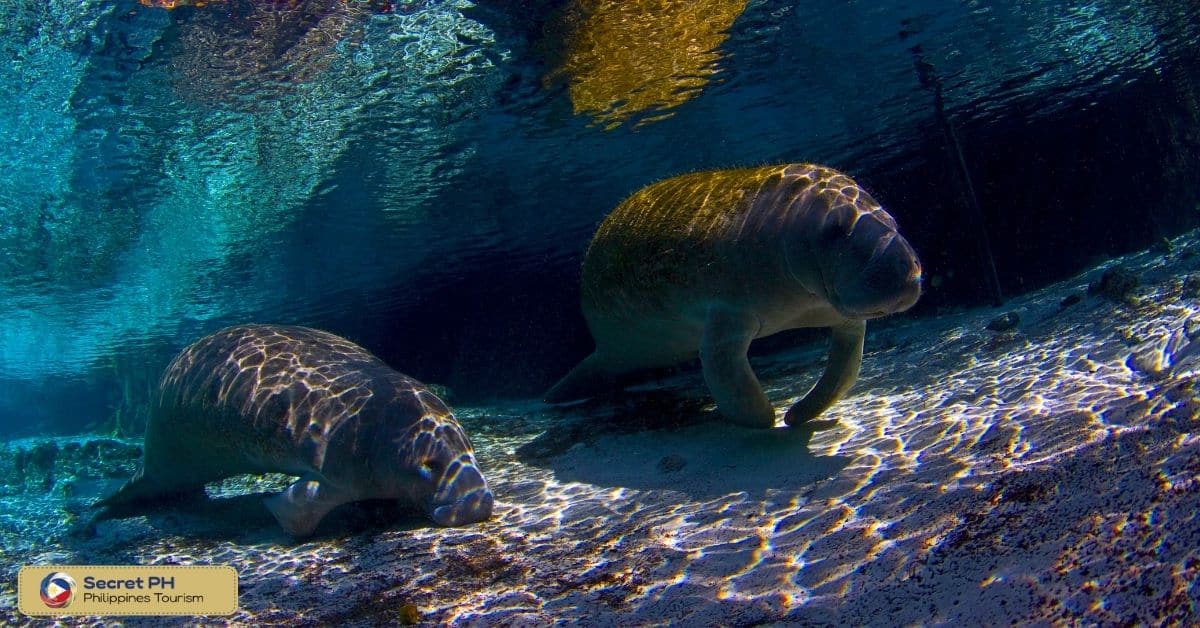
Importance of Dugongs in Ecosystems
Dugongs play a crucial role in maintaining the health of the marine ecosystems in which they live. Here are some reasons why dugongs are important to the Philippines:
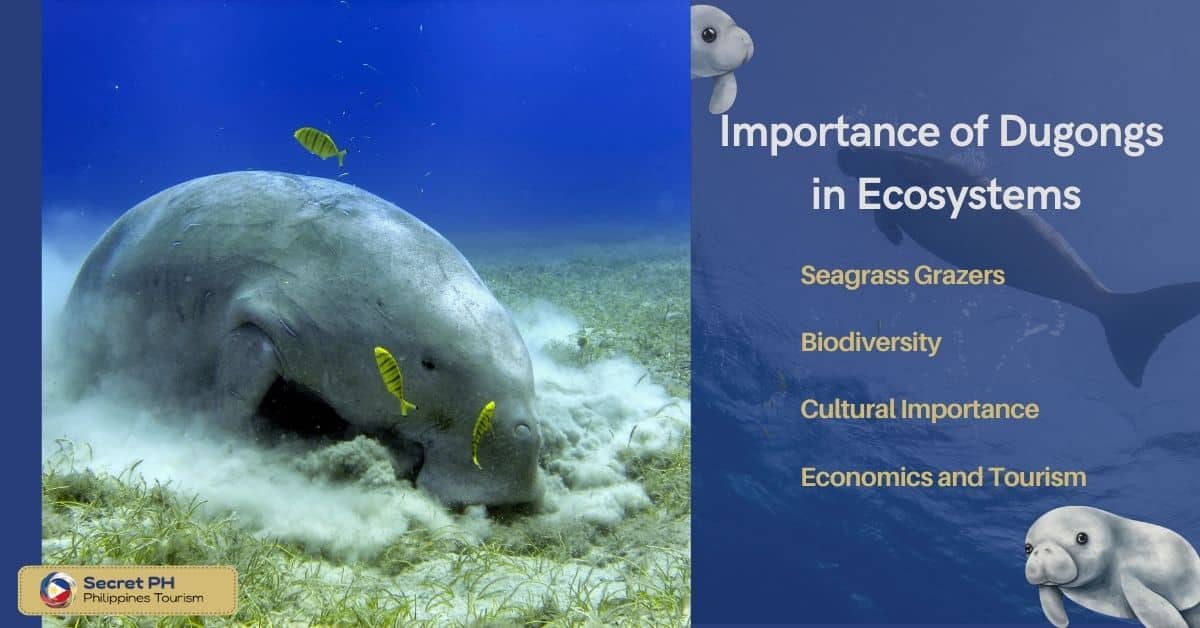
Seagrass Grazers
Dugongs primarily feed on seagrasses, which are one of the most important ecosystems in the world. Seagrasses provide food and shelter for a diversity of marine animals, including fish, crabs, and shrimp. Without dugongs to graze on seagrasses, they would become overgrown and eventually die off, disrupting the entire ecosystem.
Biodiversity
Dugongs also play an important role in maintaining the biodiversity of the marine ecosystem. Their grazing habits help to create and maintain a mosaic pattern of seagrass meadows, which in turn provide habitats for many different types of marine life. By promoting a healthy ecosystem, dugongs support a diverse range of species from algae to larger predators.
Cultural Importance
Dugongs are also an important cultural and traditional species in the Philippines. They are considered sacred animals in many indigenous cultures and have been part of the country’s folklore for generations. The culture in the Philippines sees the dugong as both a role model and a reminder of the interconnectedness of all species and the need to respect and preserve the natural world.
Economics and Tourism
Dugongs also play a significant role in the Philippine economy through tourism. Dugongs are popular attractions for snorkeling and diving tours, which bring significant income to the local economy. These tours help to create jobs and provide opportunities for local communities to benefit from the conservation of the dugong species.
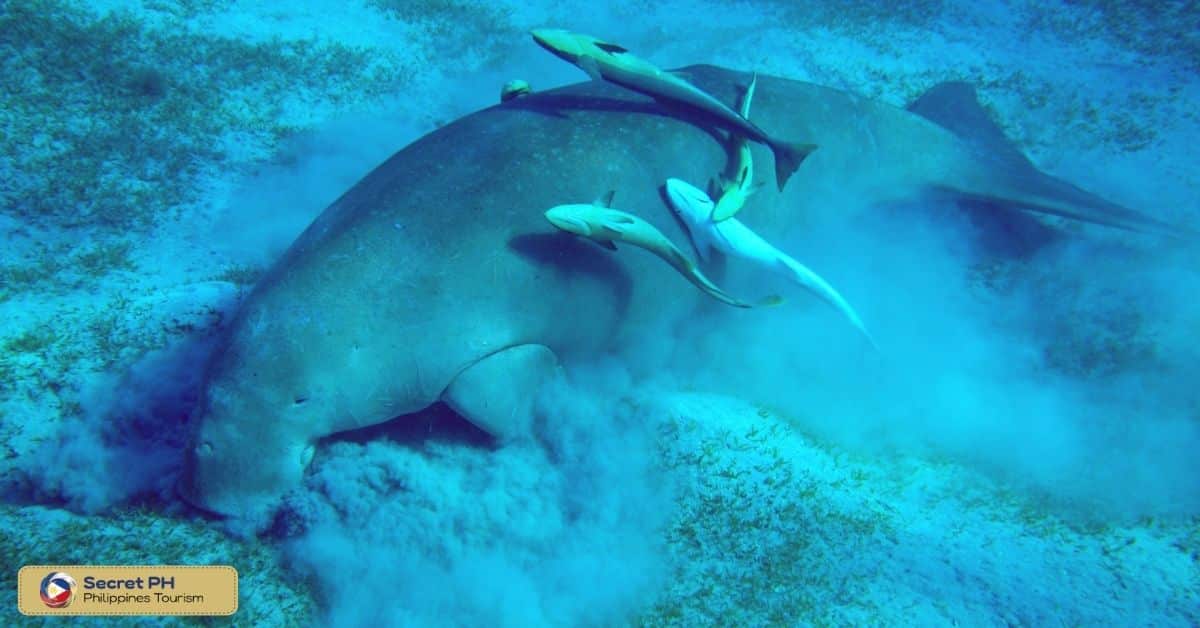
Conservation Efforts and Current Status
The conservation of dugongs in the Philippines is a pressing concern due to the various threats they face. However, there are numerous efforts being made to protect and preserve these gentle giants of the sea. This section will explore the current status of dugong conservation in the Philippines and some of the initiatives that have been implemented to help protect them.
Conservation Programs
Various conservation programs have been initiated to help protect dugongs in the Philippines. One of these programs is the Dugong of the Philippines Project, which seeks to conduct research on dugongs and implement measures to protect their habitats. The project also works to raise awareness about dugongs and promote education among local communities about their importance.
The Philippine government has also implemented various initiatives to protect the dugong population in the country. For example, a number of marine protected areas have been established in areas where dugongs are known to reside.
These areas are off-limits to fishing and other activities that could harm or disrupt the habitats of these creatures. Additionally, the Philippine Wildlife Act has been updated to include stiff penalties for hunting and other activities that threaten dugongs.
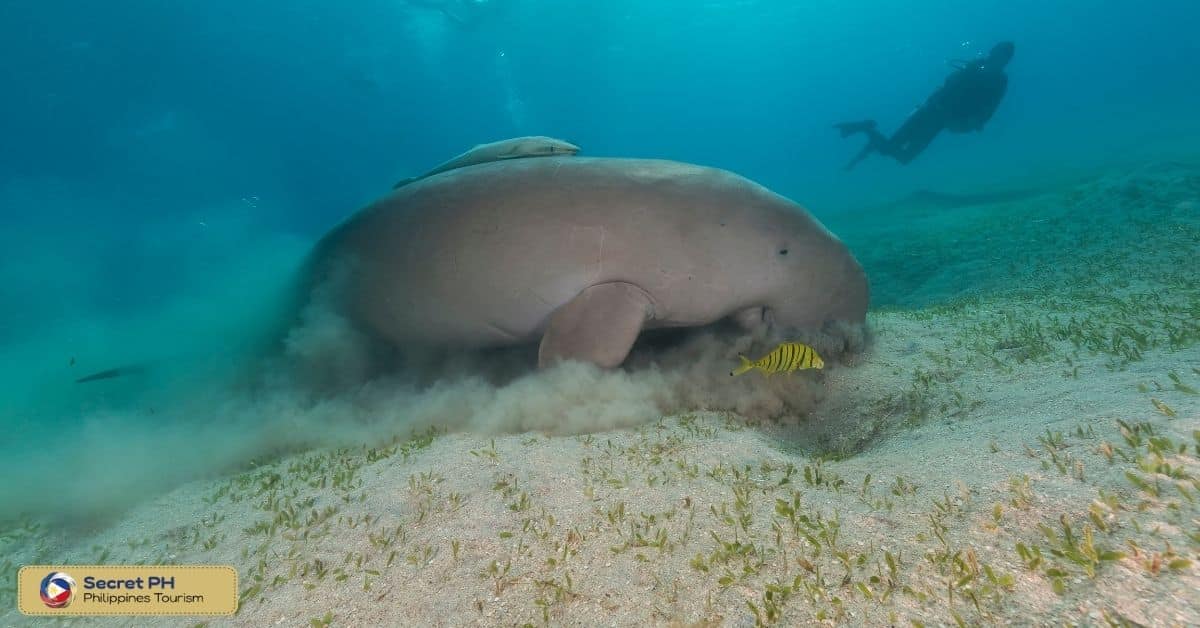
Current Status
Despite these conservation efforts, the population of dugongs in the Philippines is still under threat. The total population estimate is uncertain as most of their habitats are inaccessible or hard to survey. However, it is estimated that there are fewer than 10,000 dugongs in the country, most of which are believed to be found in Palawan.
The status of dugong conservation in the Philippines is a cause for concern as threats continue to mount. However, with concerted efforts from various stakeholders and continued support from local communities, it is possible that their populations and habitats can be preserved and protected.
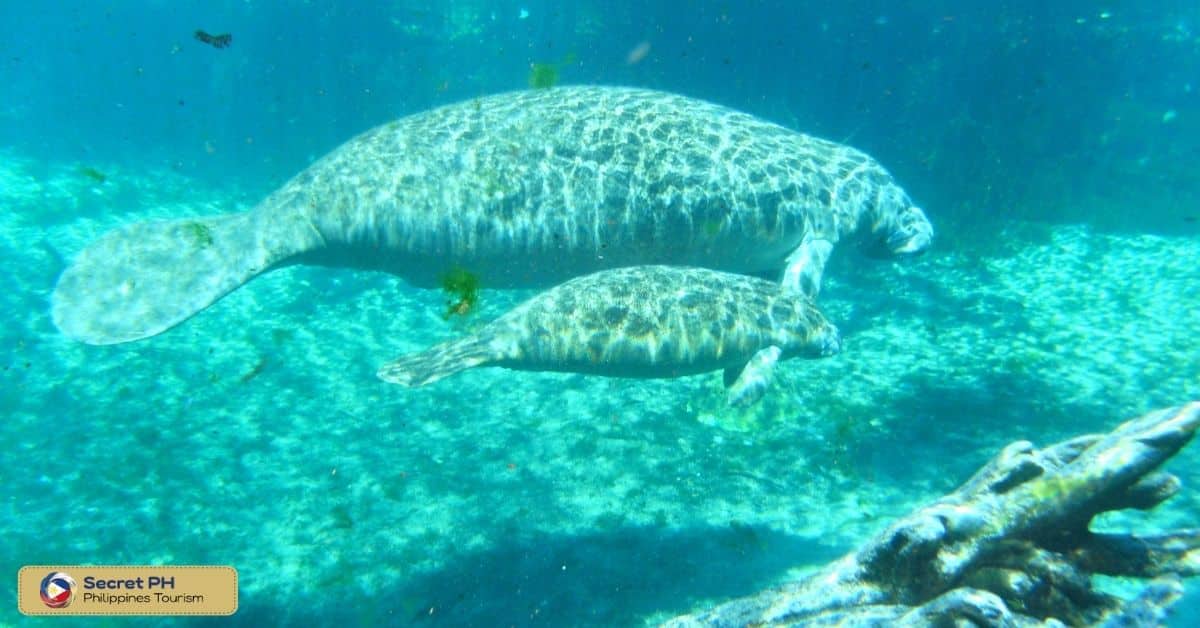
Threats to Dugongs in the Philippines
Dugongs are large marine mammals that are known for their unique appearance and diet. However, despite the significance of these animals to the marine ecosystem, dugongs in the Philippines are facing several threats that are putting their survival at risk.
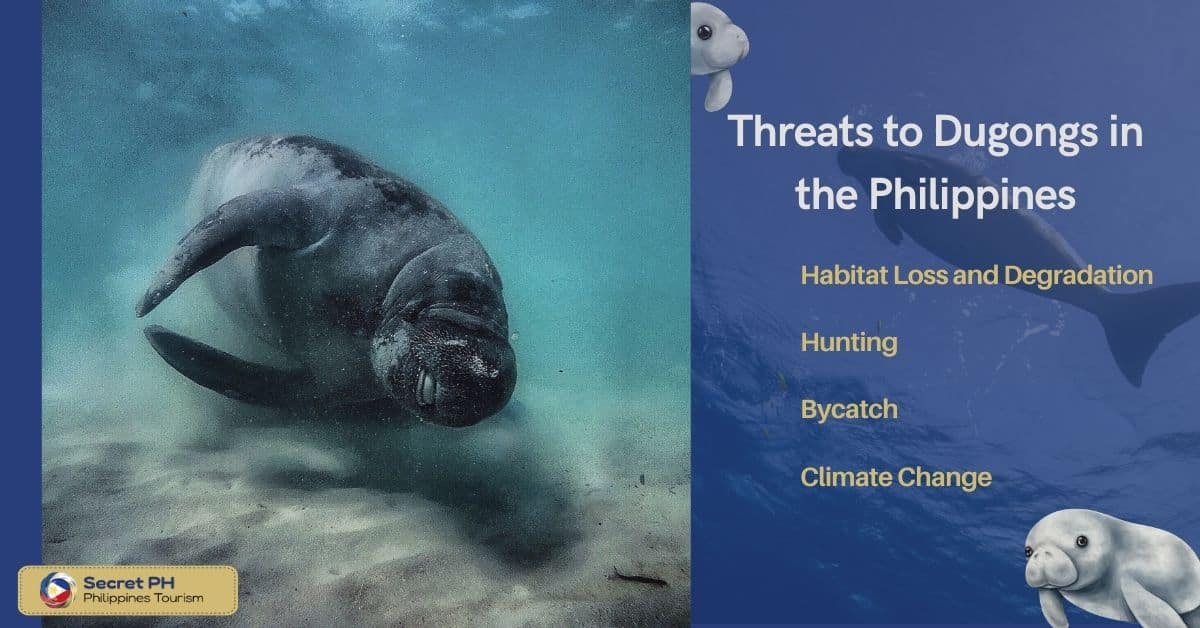
Habitat Loss and Degradation
One of the primary threats to dugongs in the Philippines is the loss and degradation of their habitat. Dugongs rely on seagrasses for their survival, but seagrass beds in the country are rapidly disappearing.
Due to various human activities such as coastal development, pollution, and destructive fishing practices. As a result, the habitat of dugongs is shrinking, which makes it more difficult for them to find food and mate.
Hunting
Another threat to dugongs in the Philippines is hunting. Despite being a protected species under the Philippine Wildlife Act, dugongs are still hunted for their meat, oil, and bones. The hunting of dugongs is especially prevalent in some coastal communities where the animal is considered a delicacy and is used for traditional medicine.
Bycatch
Dugongs are also threatened by accidental entanglement in fishing gear, also known as bycatch. Fisheries in the Philippines use different types of fishing gear, including gill nets and trawls, which can trap and kill dugongs. Bycatch is a significant problem for dugongs not only in the Philippines but also in other countries where they are found.
Climate Change
Climate change is a global threat that also affects dugongs in the Philippines. Rising temperatures and sea levels, ocean acidification, and changes in weather patterns can have a profound impact on the habitats of dugongs and their food sources. Climate change can also affect the reproductive patterns of dugongs, which can lead to a decline in their population.
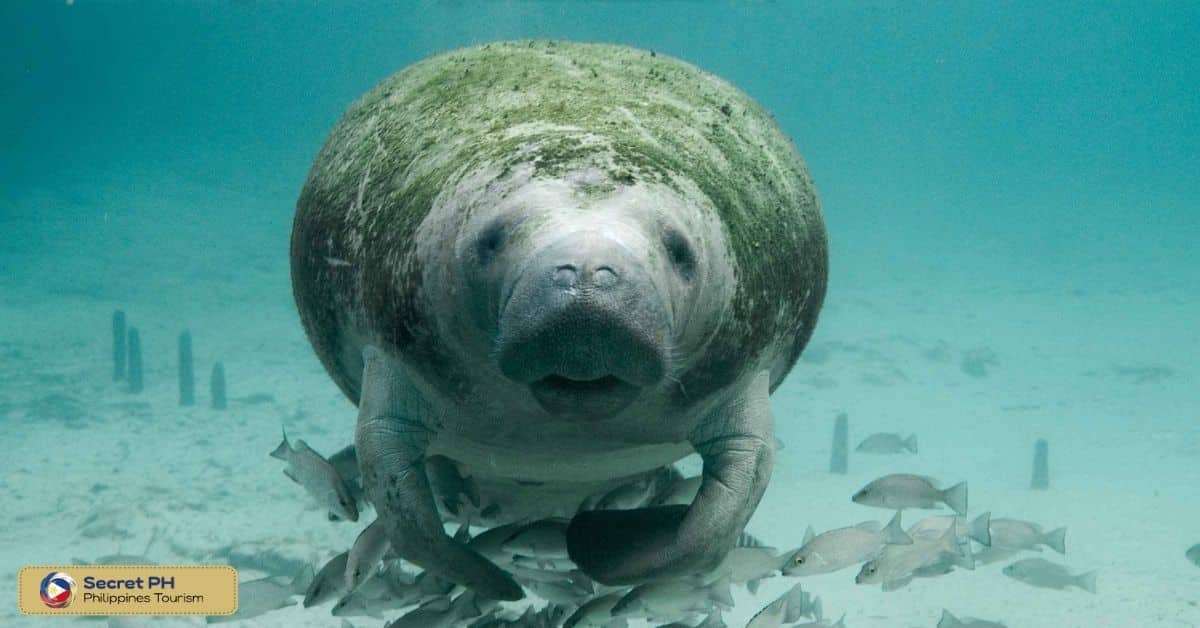
Cultural Significance of Dugongs in the Philippines
Dugongs have been an integral part of Philippine culture and folklore for generations. In many indigenous cultures, dugongs are considered sacred animals that bring good luck and fortune to those who encounter them. In some areas, they are seen as symbols of fertility and abundance, while in others they are seen as reminders of the importance of respecting nature and living in harmony with the environment.
Dugongs also have a spiritual significance that is deeply ingrained in Filipino culture. In some areas, they are seen as messengers of the gods who carry messages of healing and hope. They are also believed to bring peace and prosperity to communities by providing abundant sources of food and helping to keep the marine ecosystem in balance.
As symbols of harmony and coexistence, they are seen as important reminders to protect the environment and live sustainably. Thus, dugongs have a strong cultural significance in the Philippines that must be recognized and respected.
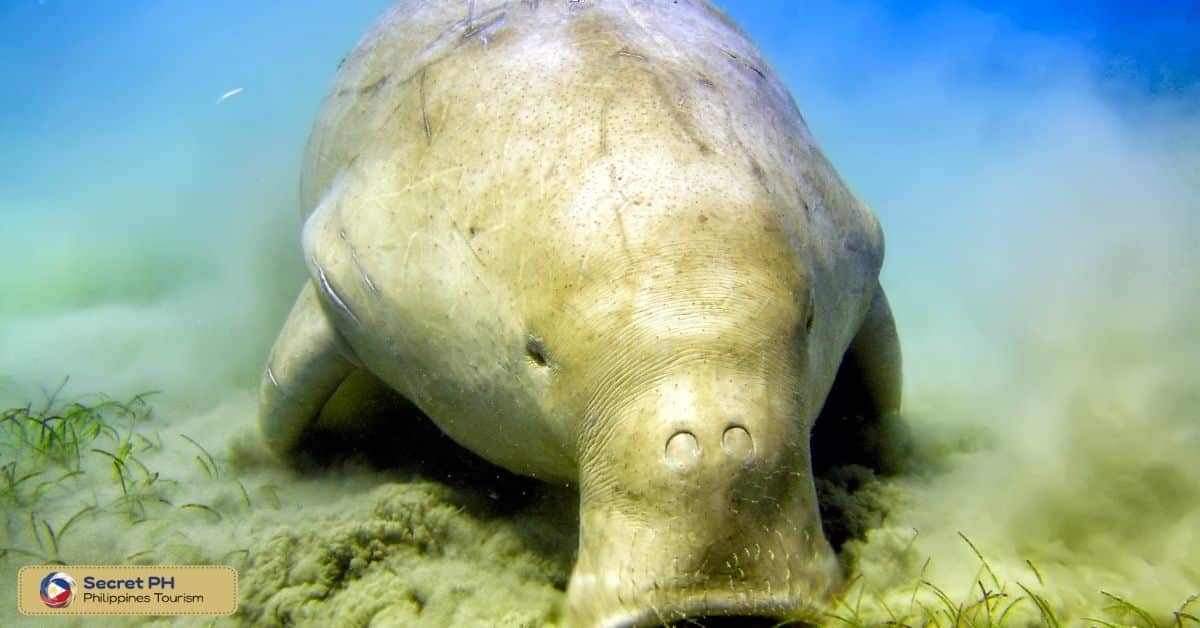
Opportunities for Eco-tourism and Sustainable Development
Eco-tourism and sustainable development present an opportunity to promote dugong conservation in the Philippines. Eco-tourism initiatives can be implemented to raise awareness of the importance of dugongs while also providing economic benefits to local communities. By providing opportunities for people to observe these gentle giants in their natural habitats, eco-tourism can help to create an appreciation and respect for dugongs.
Sustainable development is also a crucial element of dugong conservation in the Philippines. Through sustainable development, local communities can benefit from the economic opportunities that come with protecting dugongs and their habitats.
This includes initiatives such as eco-tourism, responsible fishing practices, and habitat restoration. By promoting sustainable development, local communities can help to ensure the long-term survival of dugongs and their habitats.
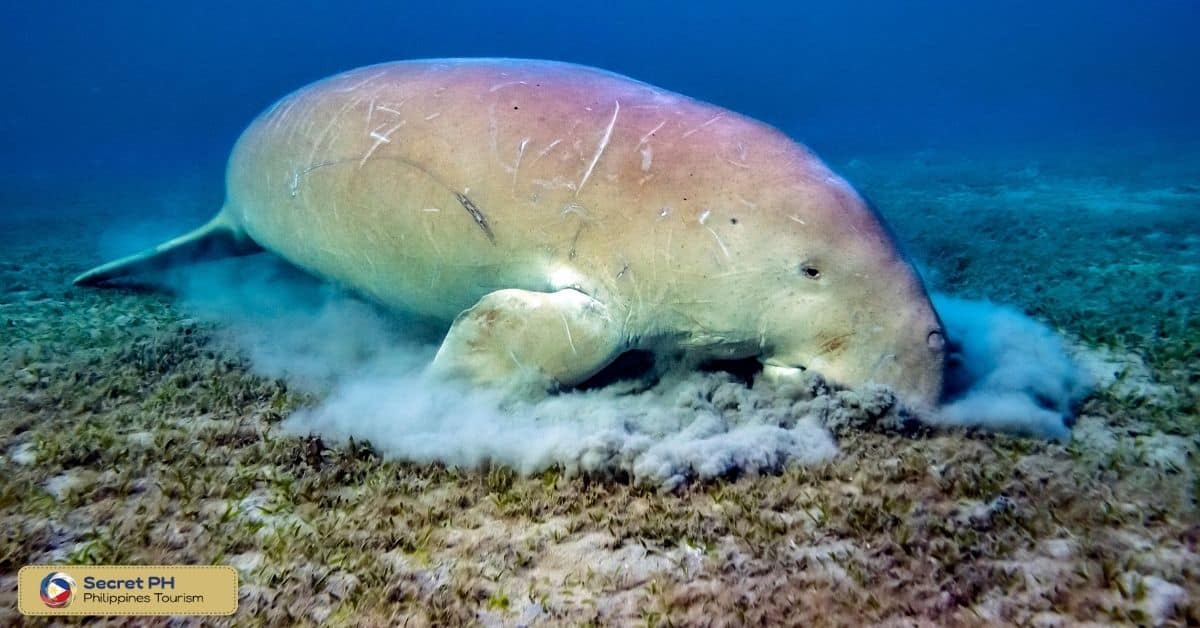
In conclusion
Dugongs are an integral part of the Philippine ecosystem and culture. Despite facing numerous threats, their population can be protected through various conservation efforts such as marine protected areas, education campaigns, and sustainable development initiatives.
Eco-tourism presents a unique opportunity to promote dugong conservation by creating awareness and providing economic benefits to local communities. With concerted efforts from various stakeholders and continued support from local communities, it is hoped that the dugong population in the Philippines will remain healthy and thriving for generations to come.

